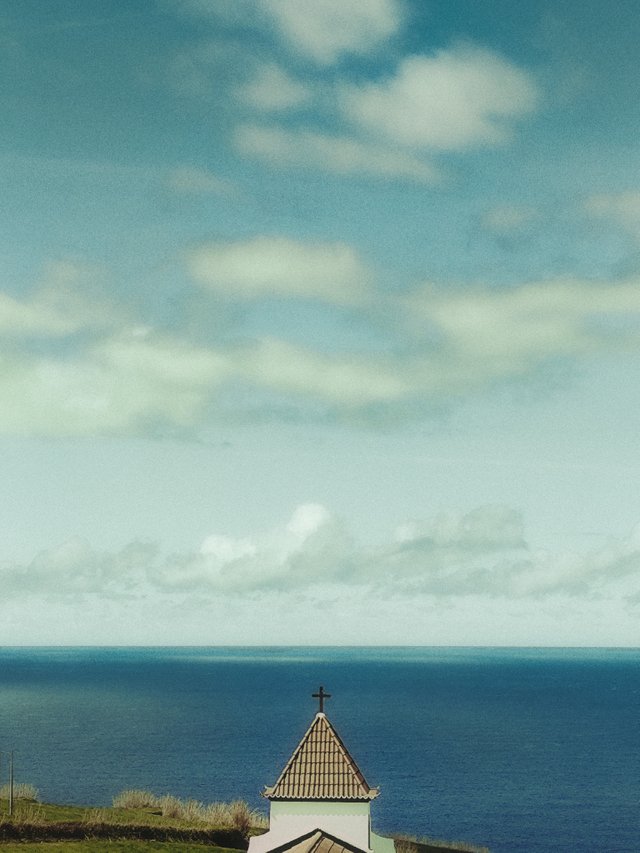📷Curiosities about the Azores Archipelago
Italy Community
✅1651 | The Loss of the Galleon São Pantaleão off the Coast of São Miguel
By the mid-17th century, maritime traffic calling at the Azores had increased due to the growth of commercial links between Brazil and Portugal and the recent establishment of the Companhia Geral do Comércio do Brasil (General Company of Trade with Brazil).
This company, inspired by proposals from Father António Vieira, was Portugal’s answer to the merchants of Amsterdam who, in 1621, had created the West-Indische Compagnie (WIC) with the aim of intervening in the West Indies, in a manner similar to the activities of the Vereenigde Oost-Indische Compagnie (VOC) in the East Indies.
From that point onward, in addition to their fight against the Portuguese colonial empire since the establishment of the Iberian Union, the Dutch of the WIC also turned their attention to Brazil. In 1624, they briefly seized the city of Salvador, then the capital of Brazil, and in 1630, they occupied the cities of Olinda and Recife. Later, they took the island of Itaparica and established a naval blockade of the port of Salvador. The project of founding a “New Holland” in northeastern Brazil was underway, and Portuguese navigation became the target of the WIC, just as the VOC targeted it in the East.
The situation became desperate, and according to historian Charles Boxer, in the years 1647 and 1648, “around 220 Portuguese merchant ships used in trade with Brazil were lost due to enemy action, with the vast majority being captured by Zeelandic privateers operating in the South Atlantic.”
In this context, in 1649, King João IV authorized the creation of the Companhia Geral do Comércio do Brasil to resist the Dutch and foster trade between Portugal and Brazil. A first fleet of 18 galleons was then sent, escorting 48 merchant vessels and armed with sufficient firepower to expel the Dutch from the island of Itaparica.
On September 24, 1650, this fleet, together with ships of the India Route, escorts of the Companhia Geral do Comércio do Brasil, and sugar fleet vessels—72 ships in total—departed the port of Salvador for Lisbon under the command of Pedro Jacques de Magalhães.
Among that large fleet was the galleon São Pantaleão, of 800 tons and armed with 36 cannons, with a crew of 358 men and carrying a cargo of rosewood.
On January 3, 1651, while sailing south of São Miguel Island, the fleet was struck by a severe storm, and the São Pantaleão could not withstand it, sinking near Ponta da Galé, close to the village of Água de Pau “in such a terrible place and rough coast.” As a result, “of the people aboard, more than three hundred drowned, and only thirty-some survived.”
This shipwreck was studied by Alexandre Monteiro and presented at the 6th International Colloquium of the Atlantic Islands: The Islands and Brazil, held in Funchal in 2000.
The fleet found itself in distress off the Azores, “not because of the English but due to the terrible weather conditions encountered near the islands.”
Indeed, “a storm rose near the islands, and with such fury did the wind batter the fleet’s ships that, with all the elements united against them, the galleon Santa Margarida, commanded by Captain Chamissa, vanished without anyone knowing where it was lost [...] São Pantaleão, commanded by D. Fernando Telles, field master of the fleet, was lost on the island of São Miguel. Most of the people drowned, and many officers and soldiers were lost, who, by their merit, would have been most fortunate to be saved. D. Fernando Telles survived, and given the disorder of his actions, it would have been a blessing had he perished.”
As a consequence of that storm, not only were the Santa Margarida and São Pantaleão lost, but also the galleon São Pedro de Hamburgo, which ran aground on Graciosa Island, and the galleon Nossa Senhora da Conceição, which was dismasted and drifted with the wind to the coast near Figueira da Foz. In total, four ships of the Royal Fleet were lost.
Shortly after, an official report was drafted regarding the shipwreck, which included instructions stating that “a diver who was part of the said fleet, named João da Cruz, should be cared for and provided daily with fifty réis,” and that he would attempt to recover whatever could be salvaged. It was also ordered that “any artillery recovered should be inventoried and registered in the royal books, delivered to the estate manager on the island of São Miguel, with calibers and counts recorded, and that the wood and iron be recovered as well.”
I am sharing photos of landscapes, moments and experiences. Nature and sea are the most visited themes in my photo collection, but any attention-grabbing aspect can be photographed. Hope you enjoy it...
| Category | #italy |
| Location | São Miguel Island - Azores |
)


Upvoted! Thank you for supporting witness @jswit.